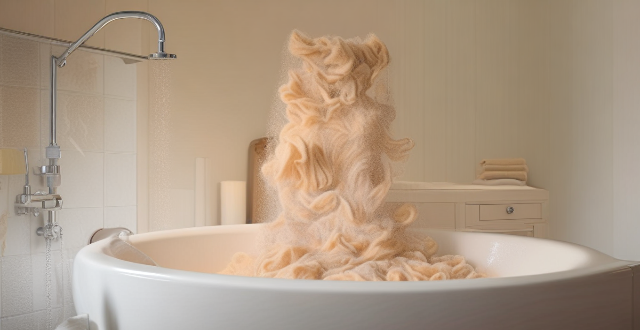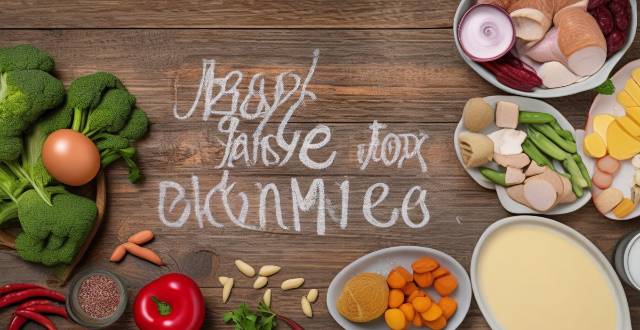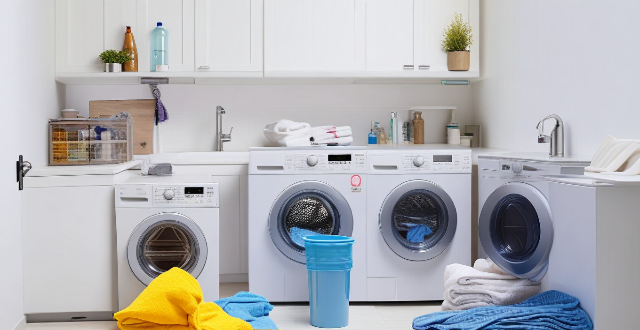Clothes Lemon

Is it safe to use lemon juice as a disinfectant in homemade cleaning recipes ?
Is it safe to use lemon juice as a disinfectant in homemade cleaning recipes? Let's take a closer look at the science behind this question. Lemon juice has a high acidity level, with a pH of around 2, making it effective at breaking down dirt and grime. However, when it comes to killing bacteria and viruses, the acidity alone may not be enough. While lemon juice does have some antimicrobial properties due to its natural compounds like limonene, these are not strong enough to completely disinfect surfaces. In fact, studies have shown that lemon juice is not effective at killing certain types of bacteria like E. coli and Salmonella. Some homemade cleaning recipes call for combining lemon juice with other ingredients like vinegar or hydrogen peroxide. While these combinations may increase the disinfecting power, they still may not be as effective as commercial disinfectants. There are also safety concerns to consider when using lemon juice as a disinfectant. Due to its high acidity, lemon juice can be corrosive to certain surfaces like marble and granite. It can also damage metals over time. Lemon juice can cause skin irritation or burns if it comes into contact with open wounds or sensitive skin. It is important to wear gloves while using it in cleaning solutions. Additionally, some people may be allergic to lemons or their scent, which could trigger an allergic reaction when using lemon juice in cleaning products. If you are looking for natural disinfectants, there are several alternatives to lemon juice such as white vinegar, hydrogen peroxide, tea tree oil, and essential oils like eucalyptus, lavender, and peppermint oils. These alternatives have strong antimicrobial properties and can be added to homemade cleaning solutions for a fresh scent. In conclusion, while lemon juice can be a useful ingredient in homemade cleaning recipes due to its degreasing properties, it should not be relied upon as a sole disinfectant. If you are concerned about germs and bacteria, it is best to use a commercial disinfectant or one of the alternative natural disinfectants mentioned above.

Is there a natural way to clean stains off my clothes ?
Removing stains from clothes can be challenging, but natural methods like using white vinegar, baking soda, lemon juice, hydrogen peroxide, and salt can effectively clean various types of stains. These techniques are gentle on the environment and clothing.

What are the best ways to remove stains from clothes ?
Removing stains from clothes requires pre-treatment, stain removers, home remedies, laundry detergent, and sometimes professional dry cleaning. Pre-treating the stain by blotting it with a clean cloth or paper towel is crucial. Commercial stain removers can be effective for various stains, while home remedies like baking soda and vinegar, hydrogen peroxide, and lemon juice can tackle stubborn stains. Applying laundry detergent directly to the stain and washing it afterward can also work. For delicate fabrics or persistent stains, professional dry cleaning may be necessary. By following these steps, most types of stains can be effectively removed from clothing.

Can I try on clothes at a sample sale ?
Attending a sample sale can be an exciting experience for fashion enthusiasts, as it often presents the opportunity to purchase designer clothing at discounted prices. However, one question that frequently arises is whether customers are allowed to try on clothes during these events. In this article, we will explore the intricacies of trying on clothes at a sample sale and provide some tips for making the most of your shopping experience.

What are some tips for washing clothes faster without compromising quality ?
Washing clothes faster without compromising quality is possible by following these tips: sorting clothes properly, using the right detergent, choosing the right wash cycle, not overloading the washer, and hanging dry when possible. These steps can save time, energy, and money while ensuring clean and fresh garments.

What are the best ways to wash clothes quickly and effectively ?
This article discusses the best ways to wash clothes quickly and effectively. It covers preparation steps such as sorting clothes, pre-treating stains, and checking pockets. It also explains how to set up a washing machine with the right cycle, warm water, and detergent. Handwashing clothes is another option that involves soaking clothes in warm water with detergent, scrubbing gently, rinsing thoroughly, and hanging to dry. After washing, drying clothes properly is important to prevent wrinkles and damage. Overall, following these steps can help you save time and keep your clothes clean and fresh.

What are some quick and easy ways to get my clothes clean ?
Here are some quick and easy ways to keep your wardrobe fresh and clean: 1. Spot Cleaning: For small stains or spills, dampen a cloth with water or a mild detergent and gently blot the affected area until the stain is removed. 2. Hand Washing: Fill a sink or basin with warm water and add a small amount of gentle detergent. Gently agitate clothing items in the water, then rinse thoroughly and hang to dry. 3. Machine Washing: Sort clothes by color and fabric type before washing. Use a gentle cycle and cold water for delicate items, and warmer water for more durable fabrics. 4. Dry Cleaning: Check care labels on garments made from silk, wool, or other delicate materials. If dry cleaning is recommended, take clothes to a professional dry cleaner. 5. Air Drying: Hang clothes outside on a clothesline or indoors on a drying rack to save energy and prolong their lifespan. This method also helps eliminate wrinkles and static cling. 6. Steaming: Hang clothes in a steamy bathroom after a shower or use a handheld garment steamer to remove wrinkles and odors. By incorporating these methods into your routine, you can keep your wardrobe looking its best without spending hours on laundry day.

What are some quick and easy recipes that can be made in under 30 minutes ?
Quick and easy recipes that can be made in under 30 minutes include spaghetti aglio e olio, grilled cheese sandwich, and avocado toast. Spaghetti aglio e olio is made by boiling spaghetti and tossing it with garlic, chili flakes, olive oil, and optional parsley and lemon wedges. Grilled cheese sandwich is made by buttering bread, adding cheese slices, and cooking until golden brown on both sides. Avocado toast is made by toasting bread, mashing avocado with salt, pepper, and optional lemon juice, and topping with cherry tomatoes, feta cheese, or poached eggs.

What are some easy and delicious recipes for a family dinner ?
The text provides three easy and delicious recipes for a family dinner: Spaghetti Carbonara, Chicken Stir Fry, and Baked Salmon with Lemon and Herbs. Each recipe includes a list of ingredients and step-by-step instructions for preparation and cooking. The Spaghetti Carbonara recipe involves cooking spaghetti and bacon, making a sauce with heavy cream and Parmesan cheese, and serving it hot with crumbled bacon on top. The Chicken Stir Fry recipe requires stir frying chicken strips, vegetables, and seasonings in a wok or skillet and serving it hot with rice or noodles. The Baked Salmon with Lemon and Herbs recipe involves baking salmon fillets with lemon slices and herbs until cooked through and flaky.

How can I incorporate sustainable fashion into my lifestyle ?
Incorporating sustainable fashion into your lifestyle is essential for preserving the environment and promoting fair labor practices. To do so, educate yourself on sustainable brands and fast fashion's impact, support ethical and sustainable brands, reduce consumption by practicing mindful shopping and creating a capsule wardrobe, maintain and care for your clothes properly, recycle or donate old clothes, and advocate for change by using your voice and engaging with brands.

How do I maximize my laundry routine for efficiency ?
Maximizing Laundry Routine for Efficiency is a guide that provides tips and tricks on how to make the most out of your laundry routine. The guide covers various aspects of laundry, including preparation, washing, drying, folding and storing, and maintenance. It emphasizes the importance of separating clothes by color and fabric type, using the right detergent and amount, choosing the appropriate wash cycle and water temperature, not overloading the washing machine, using the right dryer setting, removing clothes promptly after drying, folding clothes neatly, storing clothes appropriately, cleaning the washing machine regularly, and maintaining the dryer properly. By following these tips, you can save time, energy, and money while keeping your clothes looking their best.

How can I streamline my laundry process to be more productive ?
Streamlining your laundry process can save time and reduce stress. Here are some tips to help you be more productive with your laundry tasks: 1. **Preparation Phase**: - Gather all necessary laundry supplies like detergent, fabric softener, and stain removers. - Sort clothes by color and fabric type. - Establish a routine for doing laundry and use proper storage for dirty and clean clothes. 2. **Washing Cycle**: - Avoid overloading the washing machine and separate heavy items from delicates. - Choose the appropriate wash cycle based on soil levels and adjust water temperature for energy efficiency. 3. **Drying Process**: - Dry similar items together and clean the lint screen after every use to improve dryer efficiency. - Use timed drying to avoid overdrying and fold clothes immediately to prevent wrinkles. 4. **Organization and Maintenance**: - Fold or hang clothes immediately after drying to reduce wrinkling and put away clean clothes to avoid clutter. - Keep the laundry area clean by wiping down surfaces after each use and regularly cleaning the washing and drying machines. By implementing these steps, you can make your laundry process more efficient, saving time and effort in the long run.

What are some effective home cleaning hacks ?
The article provides a comprehensive list of cleaning hacks for different areas of the home, such as the kitchen, bathroom, living area, and laundry room. Each section includes various tips and tricks to make cleaning easier and more efficient. For example, in the kitchen, using baking soda and vinegar can help degrease the oven, while steam cleaning with vinegar can easily clean the microwave. In the bathroom, soaking the showerhead in vinegar can remove deposits, and hydrogen peroxide can be used to clean tile and grout. The article also suggests using natural ingredients like olive oil and lemon juice for furniture polish and saltwater spray for ironing clothes. By following these simple yet effective cleaning hacks, readers can maintain a clean and organized home without spending too much time on cleaning tasks.